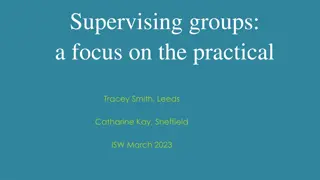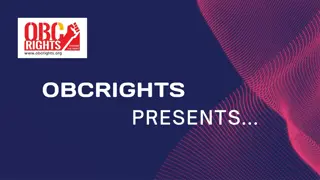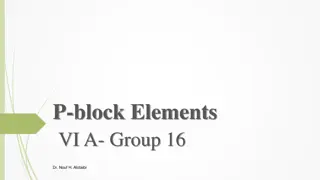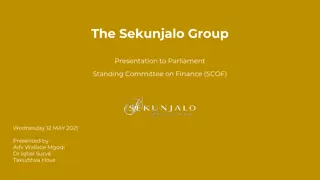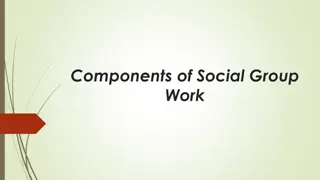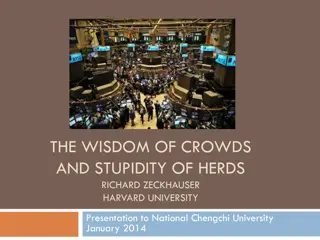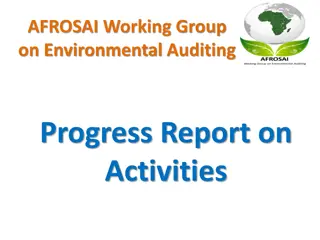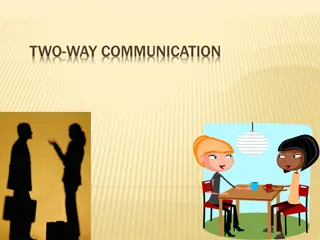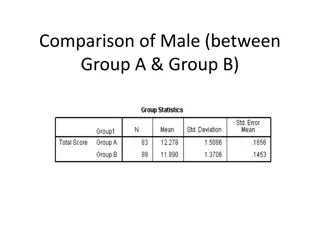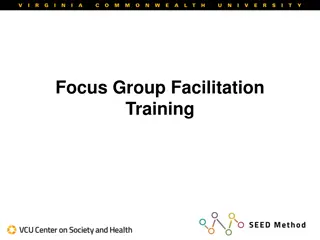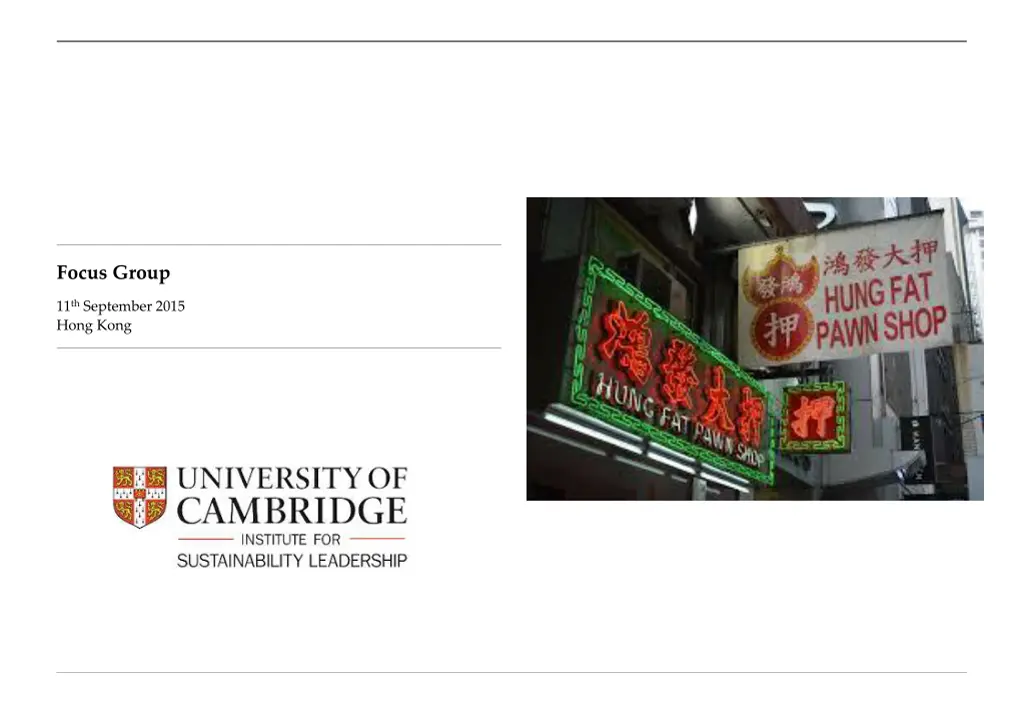
Understanding the Relationship Between Access to Credit and Quality of Life for the Poor in Hong Kong
Explore the capabilities approach in evaluating the impact of access to credit on the quality of life for the urban poor in Hong Kong. This research delves into identifying valuable abilities related to credit access and their association with well-being. The study involves a focus group, surveys, and one-on-one interviews to understand the perspectives and needs of the urban poor in Hong Kong.
Download Presentation

Please find below an Image/Link to download the presentation.
The content on the website is provided AS IS for your information and personal use only. It may not be sold, licensed, or shared on other websites without obtaining consent from the author. If you encounter any issues during the download, it is possible that the publisher has removed the file from their server.
You are allowed to download the files provided on this website for personal or commercial use, subject to the condition that they are used lawfully. All files are the property of their respective owners.
The content on the website is provided AS IS for your information and personal use only. It may not be sold, licensed, or shared on other websites without obtaining consent from the author.
E N D
Presentation Transcript
Focus Group 11thSeptember 2015 Hong Kong
Introductions The Group Julian Proctor : University of Cambridge Professor Paul Anand: Open University, Oxford University and the London School of Economics 2
Introductions The Experts Francis Ngai, Social Ventures Hong Kong Michael Birley, various charities Adjunct Associate Professor Angus Yip, HKU Space Dr. Irene Lau, HKU Moon Kim, SOW Asia Maaike Steinebach, CEO CBA Jonathan Rowold, Managing Director, BAML Mahesh Datwani, various charities 3
Is access to credit associated with a higher quality of life for the poor? 4
Capabilities approach (part 1) Sen s (1985) Capability Approach is focused on what individuals can actually do or be. For example, a woman being able to walk into a bank in Afghanistan and borrow money which is currently not possible Essentially it is concerned with the freedoms that people have and that by developing the freedoms that people have, this is valuable from a wellbeing / quality of life perspective From a developmental perspective, building the abilities of say a female to, for example, enter a bank in Afghanistan and borrow money maybe valuable to her This research is predominantly focused on identifying what abilities the poor in Hong Kong view as being valuable as relates to access to credit and whether these abilities are associated with higher quality of life 5
Capabilities approach (part 2) The capabilities approach provides a framework to conduct such evaluations of inequality, as it can assist policy makers make interventions and develop desirable capabilities, if in fact there is causation / relationship with higher levels of that capability and quality of life In a first stage, we identify a list of abilities / questions that we believe the poor find desirable based on what the current literature says. We then look to discuss and critique this list with this focus group to see how you would / if you would alter, add to or subtract from The second step involves conducting a survey with 200 of the urban poor in Hong Kong in order to hear from them whether they to agree that this list is a valuable list of capabilities. We then model this relationship In a third step, we will conduct one to one interviews, were we will investigate our empirical findings form the surveys with the interviewees to further understand why the urban poor may value specific capabilities 6
Access to credit (part 1) Access to credit has been historically seen as a tool to transform the lives of the poor (Prime Minister of Bangladesh, 1997 Microcredit summit) This view was backed up by both empirical and theoretical observation in the 1980s through early 2000s (Eswaran and Kotewall, 1980, Morduch, 1990, Pitt and Khandker, 1998). Income and investment was seen as rising, as well as social outcomes such as housing and education from increased access to credit More recently doubts have started to infiltrate the minds of academics regarding the major welfare benefits of credit (Duvendack et al, 2011, Roodman and Morduch, 2013 and Banerjjee, Duflo, Glennerster and Kinman, 2015), arguing that much of the historical empirical work has statistical flaws 7
Access to credit (part 2) More recent research has pointed towards the fact that the actual impact of credit on the poor is more varied and heterogenous. There is no silver bullet (Banerjee, Karan and Zimmerman, 2015) However, what can be said is there appears evidence that micro-credit results in a) changing inter-temporal consumption for some, e.g. purchase of durable goods at the expense of non-durable goods, and b) and results in more choice in credit for all (e.g. compared to money-lenders and informal alternatives) (Morduch, 2011) Empirical evidence from other countries does seem to indicate that regardless of the welfare benefits, there is inequality in access to credit on the basis or religion (Hartfield and Collard, 2011), ethnicity (Morduch, 2011) and gender (Fletschner and Kenney, 2011) 8
Access to credit (part 3) As Zinman (2015) states there is no well defined view of wellbeing as relates the impact of credit; instead there are a variety of differing and largely economic metrics And importantly, little work has been completed into the multi-dimensional affects of credit on individuals in terms of affect on not only economic or social outcomes but also psychological considerations or other elements of an individuals livelihood 9
Quality of life (part 1) Quality of life is multi-dimensional in nature and does not simply relate to monetary considerations (Stiglitz, Sen and Fitoussi, 2009) Quality of life is a broad concept capturing a range of factors, that influence what we value in living, beyond its material side (Stiglitz, Sen and Fitoussi, 2009) We adopt a measure of quality of life based on subjective wellbeing both life evaluation and emotional wellbeing aspects (Kahneman and Deaton, 2010) Life evaluation asks the individual how they feel about their life as a whole, it requires them to think and look retrospectively but also into the future about their life Emotional wellbeing looks at their emotional status both positive (happy) and negative (unhappy) 10
Quality of life (part 2) Recent research has shown that higher levels of income are associated with higher levels of life evaluation subjective wellbeing, but no relationship was found with emotional wellbeing (Kahneman and Deaton, 2010) Important finding, as we will investigate how our list of capabilities is associated with these varied dimensions of quality of life 11
Selected trends Hong Kong Relative to High Income OECD, Hong Kong has a low level of account ownership at 82.3% relative to 87.7% (World Bank, 2015)1 What is more surprising is that only 25.8% of the over 15 population in Hong Kong had ever borrowed any money relative to 39.8% in high income OECD (World Bank, 2015, p.75) Inequality in Hong Kong is worsening with the gini-coefficient having increased from 0.518 in 1996 to 0.537 in 2011 (HKBU, 2011, p.13) There are 1.3m individuals, representing 19.9% of the population which are classified as being below the poverty line in Hong Kong (Hong Kong Government, 2014, p. vi) 80,000 people live in cage homes with material consequences for their social and environmental context (SoCo, 2011, pp. 1-2) 12 1 http://databank.worldbank.org/data/reports.aspx?Report_Name=All-countries&Id=1da0a653. Accessed 15th August 2015. For poorest 40% of the population
Credit access seems limited for certain social groupings Hong Kong What is unclear is whether individuals in Hong Kong have a preference or not for borrowing and instead using internal sources (e.g. savings) or whether this reflects limited access to either formal or informal sources of credit The South China Morning Post ran an article in 2013, were it argued that banks had highly restrictive policies to migrants and domestic workers, as well as the poor who could not meet minimum account balances What is more surprising is the limited attention that credit access and the urban poor has had within policy making and academic circles 13
Process and Methodology Literature review Work Shop 1 Surveys Model Work Shop and results 2 Interviews Conclusions Academic articles Surveys Practitioner doc s NGO doc s Supranation doc s 5-10 Newspapers 8-16 Series experts interviews 200 of models Surveys 5-10 experts 14 Source: Modified from Cornelius, Van de Putte and Romani, 2005
Todays Key Objective Experts to scrutinise and challenge a) our research process and methodology, b) list of access to credit capabilities, c) quality of life indicators and d) survey questions 15
Agenda 16
Attachments A. List of access to credit and other financial services capabilities B. Quality of life indicators C. Survey Questions 17


